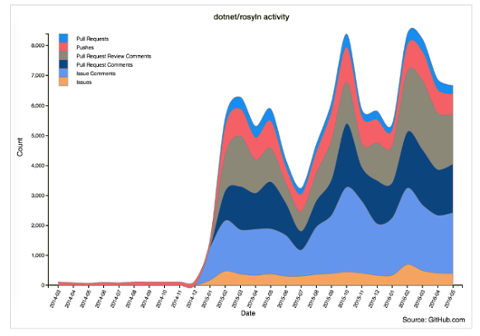
Enterprise Resource Planning projects tend to be rather large, risky affairs. For many organizations an ERP roll-out or migration will represent the single largest IT investment they're likely to make. ERP projects, however, have a well-deserved reputation for high rates of failure. Just this month, the U.S. Air Force finally canceled the remnants of the Expeditionary Combat Support System (ECSS) program after about eight years and $1 billion dollars invested. The challenges and risks associated with deploying an ERP are not in any way limited to government programs—the high failure rates have spanned most industries. Many estimates and studies have placed ERP failures rates as high as
60 percent. This is an extraordinary percentage and represents many billions of wasted dollars over the years. So, why is it that so many of these high-profile projects fail? There are lots of reasons why this is still happening, but out of that larger pool of factors, about five seem to be major causes of failure.
1. Few Solutions Are One-Size-Fits All
The projects begin with the assumption that a one-size-fits-all ERP package will meet all of the needs of the enterprise—without actually validating that assumption. It's amazing how many ERP projects begin with a decision and zero analysis. This is a recipe for failure in most types of IT projects, but even more so with ERP because of the scale and scope involved. There are lot more gray areas in ERP than most people realize, and few if any such projects are truly all-or-nothing propositions. Today's ERP solutions are much more expansive than the initial wave that began during the late 1990s. They now include a host of specialized ERPs for hospitals, universities and retail organizations.
2. Understand the Enterprise Processes
Adopting a new IT infrastructure should not in itself dictate adoption of entirely new business processes, especially if those business processes are what truly define that organization and all of its previous successes. One of the first things that needs to occur in any ERP implementation is a comparison of as-is processes with the out-of-box capability in the proposed ERP application. This gap analysis will then determine many of the options and risks that are likely to be associated with any proposed solution.
3. Understand Your Enterprise Data
This risk is similar to the process issue, but also represents its own realm, as the existing data of any organization represents the vast majority of knowledge capital it possesses. One of the biggest mistakes made in ERP projects is over-reliance on out-of-the box data models in ERP packages. Later on, the transition of legacy data to the new ERP tool represents the second-biggest risk for most ERP projects.
4. Disconnected Lifecycle Management
Many, if not most, ERP projects end up being split from the normal management framework of most organizations. This is a big problem for many obvious reasons, including:
- The fact that once deployed, the ERP will have to be managed in concert with all those other IT capabilities.
- It makes all forms of enterprise integration more problematic.
- It makes it more difficult to measure the overall success of the IT groups.
5. Improper Planning for Incremental Rollouts
While this is related to the last point, it is significant enough to warrant its own risk factor. One of the most persistent problems in large ERP failures is the inability to demonstrate capability in context (within the proposed enterprise environment) until so late in the project that correction becomes problematic or impossible. An important rule of thumb for successful ERP projects is the ability to begin demonstrating and deploying capability incrementally within one year of launch. To be fair, any project of this scale comes with an assortment of risks and constraints that most IT projects will probably never face. However, if some of the main ERP risks are understood and mitigated early enough, the odds of success are likely to improve a great deal. Image: everystockphoto.com
 Enterprise Resource Planning projects tend to be rather large, risky affairs. For many organizations an ERP roll-out or migration will represent the single largest IT investment they're likely to make. ERP projects, however, have a well-deserved reputation for high rates of failure. Just this month, the U.S. Air Force finally canceled the remnants of the Expeditionary Combat Support System (ECSS) program after about eight years and $1 billion dollars invested. The challenges and risks associated with deploying an ERP are not in any way limited to government programs—the high failure rates have spanned most industries. Many estimates and studies have placed ERP failures rates as high as 60 percent. This is an extraordinary percentage and represents many billions of wasted dollars over the years. So, why is it that so many of these high-profile projects fail? There are lots of reasons why this is still happening, but out of that larger pool of factors, about five seem to be major causes of failure.
Enterprise Resource Planning projects tend to be rather large, risky affairs. For many organizations an ERP roll-out or migration will represent the single largest IT investment they're likely to make. ERP projects, however, have a well-deserved reputation for high rates of failure. Just this month, the U.S. Air Force finally canceled the remnants of the Expeditionary Combat Support System (ECSS) program after about eight years and $1 billion dollars invested. The challenges and risks associated with deploying an ERP are not in any way limited to government programs—the high failure rates have spanned most industries. Many estimates and studies have placed ERP failures rates as high as 60 percent. This is an extraordinary percentage and represents many billions of wasted dollars over the years. So, why is it that so many of these high-profile projects fail? There are lots of reasons why this is still happening, but out of that larger pool of factors, about five seem to be major causes of failure.


